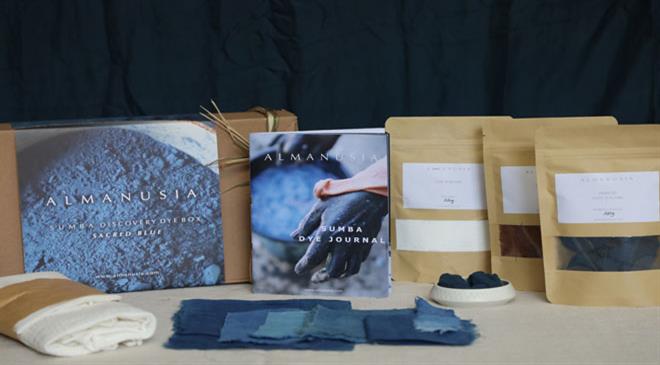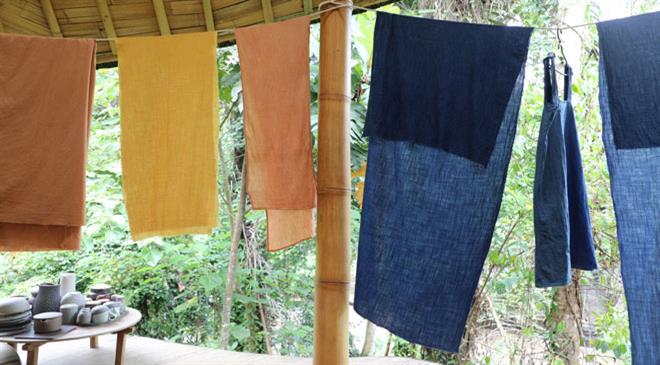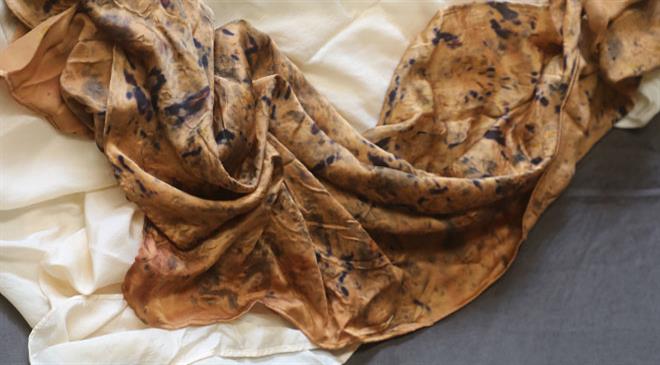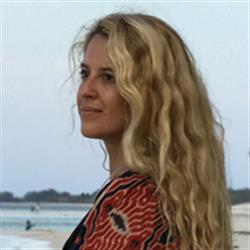Develop more destinations and partnerships
Brand Almanusia builds bridges between artisans, creatives, curious minds, forgotten techniques and remote communities. Diane Lion Giustiniani, director of Almanusia, discusses about the kind of products being sold by the brand, and its future growth plans.
Is the brand being run from Bali?
Almanusia is a global passion project whose mission is to build bridges between artists, artisans, creatives, curious minds, forgotten techniques and remote communities, sustaining our human heritage and weaving memories.
We are not limited to one place and are always looking for ways to collaborate with various artisans and artists all around the world through cultural immersion, hands-on workshops, creative retreats, sustainable events and learning experiences.
Future retreats will be held in Mexico, Brazil, France, Indonesia and hopefully India. Our heart quarters are in Corsica, France, where we hope to welcome more people in the future in our 18th century old artist residency and home.
Have you ever showcased your products on an international arena?
Not yet… I am terrible at expending business to international level. Any help and advices from your community is warmly welcomed.
What is the focus on ancient heritage weaving and knotting techniques that you follow or have revived? Please elaborate.
We work with artisans weaving Ikat and Pahikung textiles, and all using natural dyeing only.
Firstly, natural dyeing is not used so widely anymore, as it is time consuming and the long process discourages the local weavers, who commonly prefer to use chemically dyed yarns that already have the motifs, purchased in the market. Here, you already loose two very important knowledges:
- how to use surrounding nature resources sustainably and responsibly to create colours and not pollute land and rivers by using chemically dyed yarns
- how to design your own traditional motifs with the Ikat technique (prior to dyeing and weaving)
It only takes one generation to loose these knowledges that have been transmitted from generations to generations. The modern generation is facing a big challenge with the raise of a fast growing mass tourism industry, and the loss of interest for authenticity and cultural heritage.
I am hoping that with this project, not only I can help local communities be supported financially by our visits, and the sale of their textiles from their hands to the buyer directly, but also, I wish to create bridges between modern artists and those artisans, to create and exchange, inspire each other, and even collaborate on projects. It is crucial to keep their art and techniques alive, while inspiring the local young generations who see the high interest from visitors for the local heritage, culture and textiles.

What are the initial difficulties you faced after launching the brand or face even now?
The main difficulty is that, although I am working with many different communities and fabulous people during the retreats, I am currently working alone in the daily management of the project. I miss having a wonderful team of like-minded people working together on a project that is special to them.

Does the brand have only online presence, or does it have physical stores as well?
We do not have physical stores quite yet! In the future, we will have a place where we can host workshops and creative retreats of all kinds, artisans and artists in residency, and this place will be a beautiful showroom featuring treasures made by hand by the communities and people we create with all over the world.
What kind of branding activities are you undertaking?
The idea is to develop multiple projects and products under a unique brand Almanusia, all connected with the hand made and special people. That would include art work, ceramics, textiles and natural dye home linens, photography, wood, bamboo, stone work, decorative objects and interior design… photography….everything inspiring and featuring the passionate partnership between man and natural materials…
The demand from the market and pressure on the industry as a whole is today on circularity. What steps have you taken towards this?
By working on heritage conservation, transparency and traditional techniques that are completely sustainable (natural materials, sustainably harvested plants, natural dyeing). I am aware the main issue of this industry is offsetting the carbon footprint of planes. This is a huge challenge.

What are the products sold by the brand?
The first product that we worked on is a well curated experience in a box. With issues arising from travel bans all around the world, we wanted people to be able to experience our creative retreats, our passion for Sumba island and its culture and people, Ikat weaving and natural dyeing, through a Discovery box.
We created two different ones, one being for Indigo dye and the other offering yellow and mangrove wood. The very detailed booklet offered in the box, allow you to travel through photos, stories and traditional natural dye recipes to do yourself at home.
We are working on a small ceramic collection at this moment, and a tiny capsule collection made of naturally dyed linen and cotton long pants and kimono - the ideal outfit for every occasion. Mix and match for elegant resort wear… or even yoga practice and tea ceremonies… The kimono belt is multipurpose and can be used also as a scarf, head wrap, a beach skirt, a folding top, baby wrap … We love the idea of a small minimalistic wardrobe made of things that can be used for multiple occasions and with various styles.
Who are your customers?
I think right now, Almanusia touches more women. Most of the communities we visit and work with are women, mothers. Also, our recent focus has been a lot on weaving and natural dyeing, which attracts more women than men. But definitely, people reaching out are creatives, artists, designers, photographers, makers… mixing materials, techniques and savoir-faire will allow more people from all backgrounds to share these experiences too!

What are your future plans? How do you want to grow the brand?
My dream would be to be able to host more creative retreats with the special communities I have worked with and developed such a special bond with. I wish to support them more and find a way to do this continuously, not only through the travel programmes. I wish to develop more destinations and more partnerships with remote communities, in different places of the world. But specially, I wish to build a place where all my passions will come together: natural dyeing, ceramic, basketry, … our whole human heritage of the hand … a place for support, creativity, nourishment and growth. (PC)
In which all places have you been able to network with local artisans so far? Where have the creative retreats and workshops been held?
Our biggest network of local artisans is definitely in Indonesia… from Bali, to Java, Flores, Sumba … We have very special relationships with each of them, allowing our retreats to be more than just a tourist trip. It is an invitation to enter a friend's home, a family community, someone I sat with for days over the years, and welcoming me and my guests as their own.
I had the chance to start meeting artisans in Mexico and India as well as The master dyer in France, Michel Garcia, who is a mentor to me. I cannot wait to host a workshop in Corsica with him.





